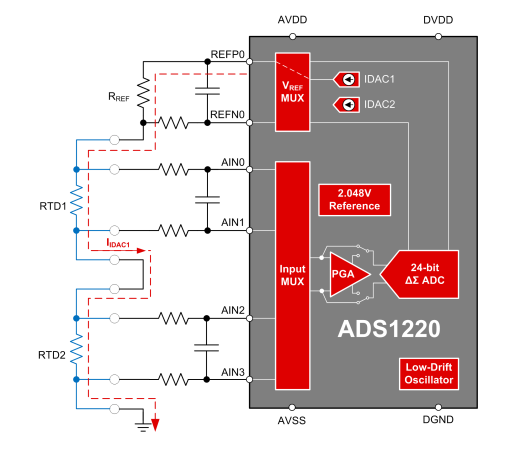Hi team,
The customer wanted to make sure if the voltage across RTD1 equals to voltage across AIN0 and AIN1 or the voltage across RTD2 equals to voltage across AIN2 and AIN3. Actually there is the pcb parasitic resistor between RTD and ADS1220 AIN. When IDAC current flows from REFP0, REFN0, the customer are not sure whether the current would flows to AIN0. If there is current flows to AIN, there will be voltage drop between the voltage across RTD1 and voltage across AIN0 and AIN1. What is the voltage drop? Will the voltage drop influence the measurement accuracy?


